Today’s Current Affairs: 29th Jun 2023 for UPSC IAS exams, State PSC exams, SSC CGL, State SSC, RRB, Railways, Banking Exam & IBPS, etc
Table of Contents
Autonomous District Councils : Mass Migration
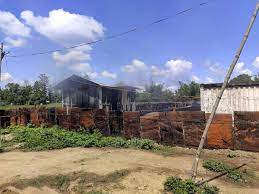
The Khasi Hills Autonomous District Council (KHADC) recently flagged the “mass migration” of people from ethnic strife-torn Manipur to the State’s capital Shillong and adjoining areas.
Autonomous District Councils (ADC):
- The Sixth Schedule provides a list of ten tribal areas in Assam (3), Meghalaya (3), Tripura (1) and Mizoram (3).
- Each of these tribal areas constitutes an autonomous district. Each autonomous district has an Autonomous District Council (ADC).
- ADCs have up to 30 members with a term of five years, of whom four are nominated by the governor and the remaining 26 are elected on the basis of adult franchise.
- The term of the District Councils is for five years from the date of their constitution.
- The functions of ADCs as defined in schedule 6 of the constitution included –
- making laws on land,
- management of forests, except reserved forests,
- appointment of traditional chiefs and headmen,
- making rules regulating the inheritance of property, marriage, divorce, the constitution of village courts,
- It can establish, construct or manage primary schools, dispensaries, markets, ferries, fisheries, roads and so on in the district.
- It can also make regulations for the control of money lending and trading by non-tribals. But such regulations require the assent of the governor.
National Sickle Cell Anaemia Elimination Mission:
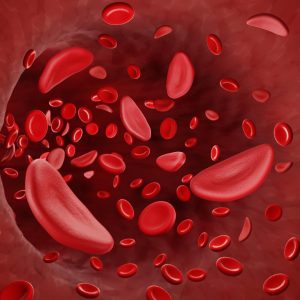
Prime Minister will launch the National Sickle Cell Anaemia Elimination Mission at a public programme in Shahdol, Madhya Pradesh.
- National Sickle Cell Anaemia Elimination Mission was announced as part of the Union Budget 2023.
- Vision is to eliminate sickle cell disease (SCD) as a public health problem in India before 2047.
- The overall aim is to enable access to affordable and quality health care for all SCD patients and to lower the prevalence through awareness, change of practices and screening interventions.
- The mission will entail awareness creation, universal screening of seven crore people in the 0-40 years age group in affected tribal areas and counselling through collaborative efforts of central ministries and state governments.
- Initially, the focus shall be on 17 states with higher prevalence of SCD,, Gujarat, Maharashtra, Rajasthan, Madhya Pradesh, Jharkhand, Chhattisgarh, West Bengal, Odisha, Tamil Nadu, Telangana, Andhra Pradesh, Karnataka, Assam, Uttar Pradesh, Kerala, Bihar and Uttarakhand.
Sickle Cell Anaemia:
- It is an inherited blood disorder.
- It affects haemoglobin, the molecule in red blood cells that delivers oxygen to cells throughout the body.
- People with this disease have atypical haemoglobinmolecules called haemoglobin S, which can distort red blood cells into a sickle, or crescent, shape.
- These sickle cells also become rigid and sticky, which can slow or block blood flow.
- The cause of Sickle cell disease is a defective gene called a sickle cell gene.
- A person will be born with sickle cell disease only if two genes are inherited—one from the mother and one from the father.
Unicorn Startup : Declined Sharply In 2023

According to a recent report, new additions to the unicorn list declined sharply in 2023, indicating a slowdown in the Indian startup ecosystem.
- The term unicorn refers to a privately held startup company with a value of over $1 billion.
- It is commonly used in the venture capital industry.
- The term was first popularised by venture capitalist Aileen Lee when she referred to the 39 startups that had a valuation of over $1 billion as unicorns.
- The valuation of unicorns is not expressly linked to their current financial performance but is largely based on their growth potential, as perceived by investors and venture capitalists who have taken part in various funding rounds.
- There are more than 1,000 unicorn companies around the world as of March 2022.
CHAMPIONS 2.0 Portal:
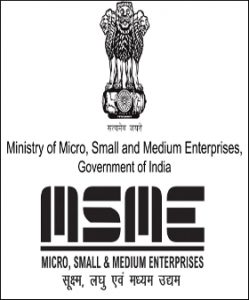
On the occasion of International MSME Day, the Ministry of Micro, Small & Medium Enterprises, MSME launched ‘CHAMPIONS 2.0 Portal.
- Champions portal is a single-window grievance redressal portal for Micro, Small & Medium Enterprises.
- The CHAMPIONS stands here for the Creation and Harmonious Application of Modern Processes for Increasing Output and National Strength. Accordingly, the name of the system is CHAMPIONS.
- It was launched on June 1, 2020, by the Ministry of Micro, Small & Medium Enterprises.
- It is created in a Hub & Spoke Model.
- The Hub is situated in New Delhi in the Secretary MSME’s office. The spokes will be in the States in various offices and institutions of the Ministry.
- As per the operational requirements, the MSME Ministry had earlier expanded the scope of the portal by onboarding 25 ministries/departments/ government institutions, 32 state governments, 58 banks/
- The revamped portal will now incorporate AI-driven chatbots and will be available in 11 languages, including Hindi, Gujarati, Bengali, and Kannada.
- The portal will also have a real-time feedback mechanism for its analysis.
Report Fish Disease App:
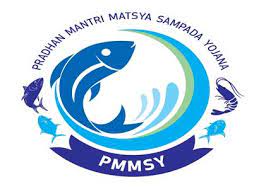
The Union Minister for Fisheries, Animal Husbandry and Dairying will launch the Report Fish Disease (RFD) App at Krishi Bhawan, New Delhi.
- Report Fish Disease App will strengthen the farmer-based disease reporting system and for improving the reporting of aquatic animal diseases in the country.
- The app has been developed by ICAR-NBFGR under National Surveillance Programme for Aquatic Animal Diseases (NSPAAD).
- Funded under: Pradhan Mantri Matsya Sampada Yojana by the Department of Fisheries, Ministry of Fisheries, Animal Husbandry and Dairying, Government of India.
- It will help the farmers in reporting the incidence of diseases in finfish, shrimps, and molluscs on their farms with the field-level officers and fish health experts.
- This shall help farmers in getting scientific advice for the efficient management of the disease.
- The data regarding the diseases will be stored on temporal & spatial scales and can be used for mapping the disease cases.
- It would support farmers in improving farmer-based reporting, getting scientific advice, and reducing losses due to diseases, thereby increasing farmers’ income.
UTPRERAK : Centre Of Excellence To Accelerate Adoption Of Energy Efficient
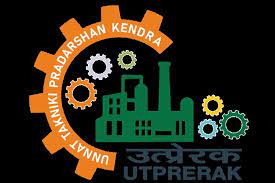
The Union Minister of State for Power inaugurated UTPRERAK, a dedicated Centre of Excellence, to accelerate industry adoption of clean technologies in New Delhi.
- The Unnat Takniki Pradarshan Kendra (UTPRERAK) is the Centre of Excellence to Accelerate Adoption of Energy Efficient Technologies and seeks to play a catalytic role in improving the energy efficiency of the Indian industry.
- It is also named as Advanced Industrial Technology Demonstration Centre (AITDC)
- It has been set up by the Bureau of Energy Efficiency (BEE), Ministry of Power.
- The Centre is mandated to become the key reference and resource institution on industrial energy-efficient technologies.
- It will demonstrate and showcase energy-efficient technologies in key industry sectors.
- It will act as an exhibition cum information centre and knowledge repository.
- It will be a knowledge exchange platform where best practices from across various key sectors can be diffused among industry professionals through workshops and seminars.
Sagar Samajik Sahayyog : New CSR Guidelines
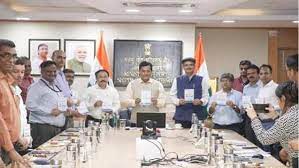
The Ministry of Ports, Shipping & Waterways has launched ‘Sagar Samajik Sahayyog,’ its new guidelines for Corporate Social Responsibility (CSR), aiming to empower ports to address local community issues in a more cooperative and swift manner.
Key Highlights of the Guidelines:
- Ports in India will allocate a specific percentage of their net annual profit towards CSR activities.
- The CSR budget for ports will be based on their respective turnover for the year, the division will be as follows:
- Ports with an annual turnover of less than Rs 100 crores will spend 3-5% on CSR.
- Ports with a turnover between Rs 100 to 500 crores will spend 2-3%.
- Ports with a turnover exceeding Rs 500 crores will spend 0.5-2%.
- 2% of the total CSR expenses will be dedicated to project monitoring by the ports to ensure effective implementation and monitoring of the respective CSR projects.
- Each Major Port will establish a corporate social responsibility committee, headed by a deputy chairperson of major port to plan and implement CSR initiatives.
- The committee will consist of two other members. CSR projects must be implemented into the business plans of major ports, addressing social and environmental concerns related to their operations.
- A CSR plan will also need to be prepared for each financial year.
- The CSR projects and programmes will focus on activities specified in Section 70 of the Major Port Authorities Act, 2021.
- According to Section 70 of the Act, the organization may use its funds for providing social benefits including development of infrastructure in areas of education, health, housing, skill development, training and recreational activities for its own employees, customers etc.
- 20% of the CSR expenses must be earmarked for the Sainik Kalyan Board at the district level, the National Maritime Heritage Complex, and the National Youth Development Fund.
- Additionally, 78% of the funds should be directed towards social and environmental welfare initiatives benefiting the community.
- These include projects related to drinking water, education, vocational training, non-conventional and renewable energy sources for electricity, health and family welfare, livelihood promotion for Economically Weaker Sections (EWS), community centers, and hostels.
- 2 % of the total CSR expense is allocated for project monitoring under the CSR programs by the ports.
Seven Products From Uttar Pradesh Have Received The GI Tag:
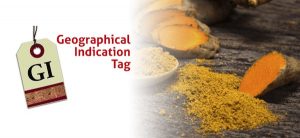
Seven of its distinctive products being granted Geographical Indication (GI) tags by the Geographical Indications Registry in Chennai.
Seven Products are:
Amroha Dholak: A Musical Marvel
- The Amroha Dholak is a musical instrument crafted from natural wood.
- Preferred wood choices include mango, jackfruit, and teakwood.
- Animal skin, usually goatskin, is meticulously fitted to create the drum’s surface.
Baghpat Home Furnishings:
- Baghpat and Meerut are renowned for their exclusive handloom home furnishing products.
- The weaving process involves cotton yarn and is predominantly done on frame looms.
Barabanki Handloom Product:
- Barabanki and its surrounding areas are home to around 50,000 weavers and 20,000 looms.
- The annual turnover of the Barabanki cluster is estimated to be ₹150 crore.
Kalpi Handmade Paper:
- Kalpi is recognized for handmade paper manufacturing.
- Munnalal ‘Khaddari,’ a Gandhian, introduced the craft in the 1940s, although its roots in Kalpi’s history may extend further.
Mahoba Gaura Patthar Hastashlip:
- Mahoba Gaura Patthar Hastashlip represents the unique stone craft of Mahoba.
- The stone used, scientifically known as the ‘Pyro Flight Stone,’ is a soft and radiant white-coloured stone predominantly found in the region.
Mainpuri Tarkashi:
- Mainpuri Tarkashi is a popular art form characterised by brass wire inlay work on wood.
- Traditionally used for khadaous (wooden sandals), Mainpuri Tarkashi has been a household necessity.
- Leather alternatives were sought due to cultural considerations regarding cleanliness
Sambhal Horn Craft:
- Sambhal Horn Craft utilises raw materials procured from deceased animals and this craft form is entirely handmade.
Helen Keller Day 2023:

Helen Keller Day is celebrated on June 27 each year to honour the birth of Helen Keller (American author, disability rights advocate, political activist and lecturer).
- Despite being deaf and blind, Helen Keller overcame her challenges and achieved great things in her life.
- She became a successful writer, founded an organization for the blind, and advocated for people with disabilities.
- The Department of Empowerment of Persons with Disabilities in India organized various events across the country, including awareness programs, seminars, workshops, sports activities, and quiz competitions, to observe Helen Keller Day and inspire people, especially those with disabilities.
Aadhaar Authentication For Registration For Births And Deaths:

The Office of Registrar General of India (RGI) has been granted permission by the Centre to perform Aadhaar authentication during the registration of births and deaths in the country.
- Aadhaar is not mandatory for such registration.
- The Registrar General of India’s office can voluntarily authenticate the Aadhaar numbers collected during the registration process to verify the identity of individuals.
- State governments and Union Territories must adhere to MEiTY’s guidelines regarding the use of Aadhaar authentication.
- The Ministry of Home Affairs (MHA) has allowed the Registrar General and Census Commissioner to utilize Aadhaar authentication for birth and death registrations, following authorization from the Ministry of Electronics and Information Technology (MeitY).
- The Registrar, appointed under the Registration of Births and Deaths Act, will now have the option to voluntarily verify the Aadhaar numbers provided in the reporting forms for births and deaths.
- This authentication process aims to establish the identity of individuals such as children, parents, informants, and spouses.
- The Registrar General and Census Commissioner is a government office responsible for overseeing the registration of vital events such as births, deaths, and marriages.
- They play a crucial role in maintaining accurate demographic data and conducting national censuses.
Second-Largest Road Network In The World : India
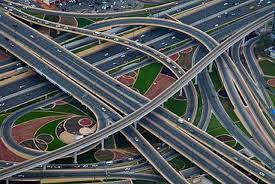
India now has the second-largest road network in the world, after the US.
- In 2013-14, the total length of National Highways was 91,287 km, which has increased to 1,45,240 km in 2022-23.
- India has a total length of 4,219 km of expressways.
- The total length of National Highways in India has increased by about 59% in the last nine years.
- FASTag has led to a significant jump in toll collection revenue: Toll revenue rose from Rs 4,770 crore in 2013-14 to Rs 41,342 crore in 2022-23 (the aim is to increase toll revenue to Rs 1,30,000 crore by 2030)
- The waiting time at toll plazas has reduced from 734 seconds in 2014 to 47 seconds in 2023, with a goal of further reducing it to 30 seconds.




